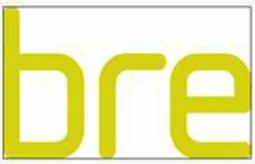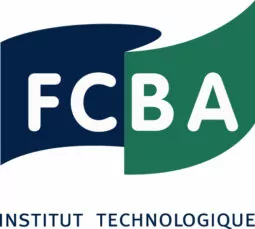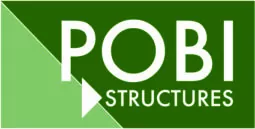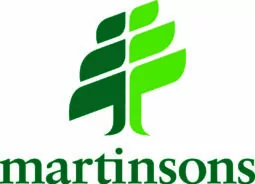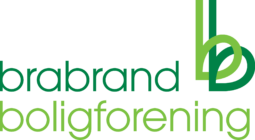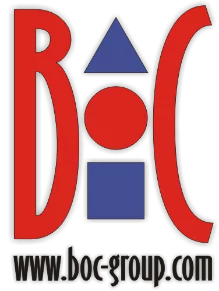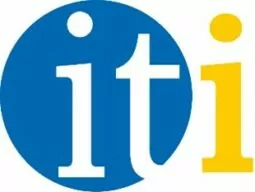Testing, analysing and elaborating business models
Table
of contents
- What is a business model?
- Business models – main goals
- Business models – types
- Business models – examples
- What kind of information does a business model provide?
- Research and analysis needed to develop
- Research and market analysis supporting business model development
- Our clients
- Why choose our offer?
- Research and market analysis supporting business models development – Price list
- FAQ
According to Dr Alexander Osterwalder, author of the international bestselling handbook “Business Model Generation”, business model is a detailed description of how a company operates, including such elements as value, which the organization creates and delivers to clients, and profits the organization derives from the created value.
Each organization operates according to a certain business model. Conscious work on the business model, trying to develop a unique way of selling products and services, so that the generated value translates into increasing profits for the company, can facilitate gaining a competitive advantage in the market and contribute to the development of the organization.

Business models – main goals
The goal of working on a company’s business model is to identify the product/group of products/service to be sold, as well as the target customers to whom it will be offered, while predicting the costs associated with the entire production and sales process. According to the pioneer of management theory, Peter Drucker, the business model shows “who your customer is, what value you can create/add for the customer, and how you can do it at a reasonable cost.”
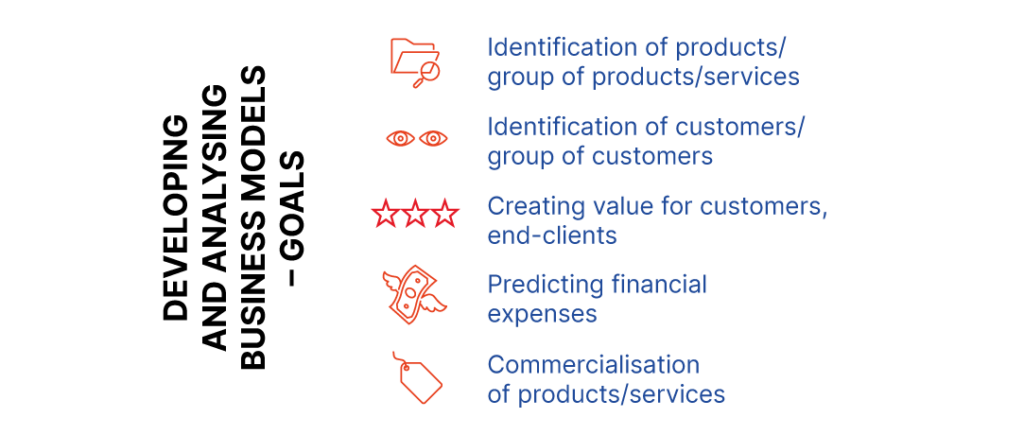
Business models – types
Below we present the most popular types of business models:
- Internet platform – in this model, the company creates a platform that connects two (usually sellers with buyers) or more groups of participants, acting as an intermediary. The value proposition in this model is to enable and facilitate finding each other and establishing relationships.
- Subscription – a company provides certain services to consumers for a fixed monthly, quarterly or annual fee. Typically, a company segments the market and presents several offers with different features and prices. The subscription-based business model is suitable for service- or content-based websites. The challenge for the company is to offer valuable content that will keep customers coming back to the supplier.
- On-demand – this type of business aims to satisfy customers when they spontaneously need a given product/service. The company strives to ensure fast delivery of products and services to the door of its customers.
- Freemium – a model that includes both free and paid services. Typically, the company attracts new customers with a free subscription. However, it is free only for a limited time or as a part of basic functionalities. If customers want to unlock the full capabilities, they have to pay. This option is ideal for encouraging users to try a product.
- A new form of direct sales – in this model, a sales representative sells the product directly to the end customer. More and more often, however, the company establishes cooperation with its customers, who start selling this product on their own, where they receive a % commission for each product sold.

Business models – exmples
- Example of business model based on multi-sided platforms and sharing economy
Airbnb is a very popular online marketplace that allows users to list, find and rent accommodation for a processing fee. On the one hand, the clients of the platform are private individuals – tourists looking for accommodation, and on the other hand, people offering accommodation. What is unique about this business model is that the company does not rent accommodation from the host but acts as an intermediary between supply and demand. Their business model is based on the sharing economy and a strong belief that homeowners are willing to rent vacant space to strangers.
- Example of freemium business model
Spotify is one of the largest music streaming providers with millions of active users and subscribers worldwide. Spotify operates on a freemium business model. This means that some of its services are available for free, while some services are considered premium and are only accessible through payment. Spotify generates revenue from its users who utilize the free service (free users are presented with advertisements, which serve as a source of revenue and compensation for the free services offered by Spotify – advertisers pay Spotify to showcase their products and services) or subscribe to the premium service.
What kind of information does a business model provide?
The business model includes elements related to marketing/sales (value creation), operations (value delivery) and finance (value delivery).
The most popular business modeling tool is the Business Model Canvas developed by Alexander Osterwalder or Lean Canvas, which focuses on a specific problem and is dedicated mainly to entrepreneurs and start-up businesses.

Business Model Canvas is a tool divided into 9 areas called Building Blocks which provide the company with information about:
- customer segments refer to groups of customers to whom you sell a given product and for whom we can generate value;
- value proposition refers to the specific needs of the individuals from the previously identified segments that a given product can satisfy, as well as what distinguishes this product or service from the competition;
- distribution channels refer to the ways in which the company can deliver value to the customer;
- customer relations refer to all the activities around service delivery, communication or after-sales service that the company will use to create relationships with customers to retain them and prevent them from switching to competitors;
- revenue streams, which is how the company will earn money for the value it provides to customers;
- key resources refer to resources = assets that are necessary for the company to deliver value to the customer and for channels and relationship strategies to function;
- key activities refer to the activities necessary for the company to develop and deliver value to the customer;
- key Partners refer to the business partners thanks to whom it is possible to deliver value to customers and their analysis in order to ensure the benefits and motivation of each of them;
- cost structures refer to the costs that may be associated with delivering value to the customer, including the implementation of the aforementioned elements of the business model.
Research and analysis needed to develop business models

Organizations are currently operating in an increasingly dynamic environment and market context, which makes them susceptible to various rapidly changing influences. To accurately describe the business model, it is necessary to conduct a series of research and analysis, which are designed to provide relevant information regarding the functioning of the organization (internal analysis) as well as the business environment (external analysis). Only on the basis of thorough research, we are able to determine whether a particular business model will be beneficial for us and will allow the company to stay in the market and achieve success.
The first step in working on a business model is to analyse the strengths and weaknesses of the company, as well as its resources. It is crucial to conduct a SWOT analysis (strengths, weaknesses, opportunities, threats) – one of the fundamental methods of business analysis that shows the company’s strengths (elements that give the company an advantage over others), weaknesses (elements that put the company at a disadvantage compared to others), opportunities (factors in the company’s environment that the company can use to its advantage), and threats (factors in the environment that can cause problems for the organization).
Furthermore, to incorporate demographic, economic, social, technological, environmental, and political factors into the analysis, we also suggest conducting a DESTEP analysis. This analysis allows us to understand external environmental factors and determine their impact on the organization and its activities.
In terms of external analysis, it is crucial to conduct:
- consumer behavior research which refers to the process of collecting and analyzing consumer data to identify characteristics of target audience groups, including their needs, preferences, and opinions;
- customer segmentation which enables us to divide customers into groups with similar preferences and consumer behaviors based on analyzing their characteristics such as purchasing behaviors, preferences, demographics, income levels, etc.;
- market research which enables the characterization of fundamental market mechanisms such as supply, demand, prices, and trends;
- competitive analysis which reveals the strength of the competition, their market share, the products they offer, and how they operate and subsequently allows us to adjust the company’s operating strategy accordingly.
Which kind of information do market research and analysis supporting the development of business models provide?
- Consumer behavior research provides information about consumers’ needs and preferences. It delivers social, demographic, cultural, and psychological knowledge that influences purchasing decisions. With this information, we can select customer segments and plan appropriate actions tailored to those segments.
- Customer segmentation research allows for:
- completing the customer segment building block in the Business Model Canvas and understanding customers’ characteristics,
- gaining market insights and choosing the appropriate type of business model,
- selecting optimal methods of operation for each group (to fill in the value proposition, customer relationship, and distribution channel building blocks in the Business Model Canvas), based on the identified characteristics and behavior of the target group.
- Market research:
- provides information about market structure, size, and forecasted growth, market trends, key players, as well as future market demand, prices, and distribution channels.
- enables the creation of a business strategy tailored to the market potential and the selection of an appropriate business model,
- allows for the identification of such business model elements as effective sales strategy, distribution, and pricing.
- Competitive research:
- provides detailed information about the competition, such as the value they offer to specific customers/segments, the number of companies with similar product/service offerings, and their market shares.
- enables finding a niche in the market and selecting the appropriate customer segments to target.
- allows for the adjustment of company strategy and the selection of an appropriate business model to differentiate from the competition.
- facilitates the identification of elements in the business model such as customer value proposition (to stand out from the competition), customer relationships, and distribution channels (based on the best and worst practices of competitors).
- A/B tests refer to comparative tests conducted to compare at least two slightly different versions of a product in order to determine which one is better.
- UX/UI research, in the case of ICT products and services, involves methods such as face-tracking, eye-tracking, EEG (electroencephalography), etc.
The information gathered from conducted market research, SWOT and DESTEP analysis, customer interviews at various stages of product/service development, and workshops with the customer will enable the completion of the Business Model Canvas/Lean Canvas – a starting template for working on the business model. Subsequently, it will facilitate the development of a strategy to implement actions within the newly established model.
To accurately prepare business model for a specific end client, we also utilize the following tools, such as:
- Minimum Viable Product (MVP) is a product with key functionality, meaning it is a sufficiently defined product to demonstrate its value to potential customers and enable the company to measure customer interest.
- Value Proposition Canvas (tool to define the unique value proposition of a business model) and Ad-lib value proposition (method for quickly shaping alternative directions for the value proposition, it forces the company to specify how exactly it intends to create value).
So far, we have had the opportunity to collaborate within international research projects with various companies and research institutions that wanted to develop a business model for a new product or solution. The conducted market research and analysis, and workshops with our partners who were involved in creating innovative products have contributed to the development of business models for these new solutions and helped formulate business plans and commercialization strategies.
Among our partners are, for example:

We specialize in market research, which is crucial for developing a business model. For years, we have been working with various entities within international projects to create business models for innovative products and services. We would be happy to answer your questions and provide guidance on how to prepare for elaborating a business model and which research and analysis to consider.
The market research and analysis aimed at developing a business model are tailored specifically to the needs of our clients. Therefore, we encourage you to get in touch with us so that we can provide a detailed price of our services.
We present here the most frequently asked questions that will help you understand what a business model is and the research and analysis we conduct to develop business models. We also encourage you to contact us if you do not find satisfactory answers below.
A business model is a detailed description of how a company operates, taking into account key elements such as the value the organization creates and delivers to customers, as well as the profits the organization generates from the generated value. It is the company’s strategy to do business in a way that brings profits.
To accurately describe the business model, it is necessary to conduct a series of research and analysis, which are designed to provide relevant information regarding the functioning of the organization (internal analysis) as well as the business environment (external analysis). Only based on thorough research are we able to determine whether a particular business model will be beneficial for us and will allow the company to stay in the market and achieve success. The next step is working on the business model itself, during which we collaborate with the client to create step by step the business model using such tools as the Business Model Canvas or Lean Canvas, which are business modeling frameworks.
To develop a business model, we conduct the following analyses:
- SWOT analysis which shows the strengths and weaknesses of the organization, as well as the opportunities and threats that are present in the environment;
- DESTEP analysis which helps to understand the external environmental factors and their impact on the organization and its activities;
- consumer behavior research which allows us to identify characteristics of target groups, including their needs, preferences, and opinions;
- customer segmentation which can allow us to divide target consumers into groups with similar preferences and consumer behaviors;
- market research which enables us to characterize the fundamental market mechanisms, such as supply, demand, prices, and trends;
- competitive analysis which helps adjust the company’s operating strategy.
The business model allows for the development of a business strategy in a more holistic way, going beyond revenue models alone. Nowadays, it is no longer sufficient to only sell products or services and do it correctly because such a traditional approach no longer guarantees success and, in some cases, even survival. Nowadays, to gain and maintain a competitive advantage, a company must have a well-thought-out and analyzed plan regarding whom to sell to, what to sell, how to charge fees, and what value to create. This is precisely what the business model describes—the actions an organization takes to generate long-term value for its customers. After developing the business model, the company should have a more focused direction on how it wants to operate and what its future should look like.
Based on the obtained research results and conducted analyses (SWOT analysis, DESTEP analysis, consumer behavior research, customer segmentation, market research), we can provide accurate and distinctive answers to key questions necessary for developing a business model:
- Who is our customer?
- For which customer segments do we create value?
- What value do we want to generate for each segment to differentiate ourselves from the competition?
- What kind of relationships do customers expect from us? Do they expect personal support or automated service?
- What kind of customers’ problems do we solve? What is crucial for them?
- Where can we meet our customers and which channels will we use to establish contact with each customer segment?
- What are customers/customer segments willing to pay for, and how much?
Market research will also help in selecting the most appropriate type of business model.
Market research is useful for companies and organizations that plan to develop a new business model, as well as for those who already have their own model but plan to update it. Market research is a must-have point in order to properly develop and update a business model that shows a broader view of the situation and supports the creation of well-thought-out strategies.
We support all the industries





